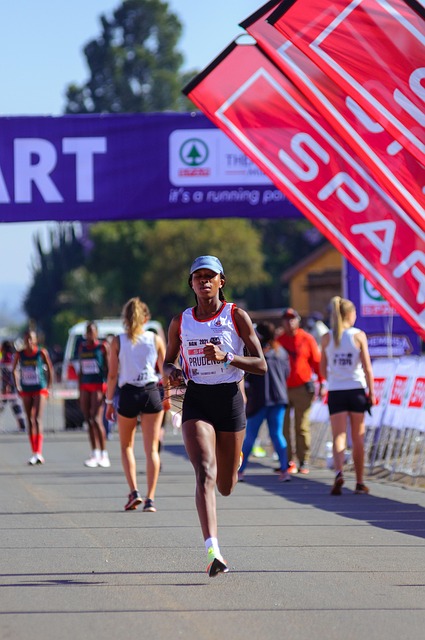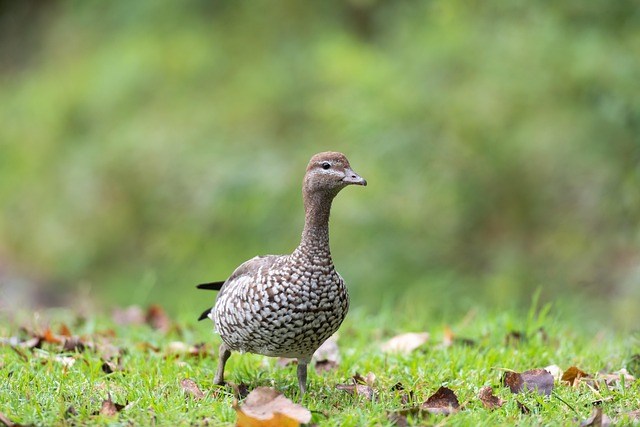
Category: Oregon Ducks Cross Country Team
Oregon Ducks Cross Country Team: A Comprehensive Analysis
Introduction
Welcome to an in-depth exploration of the renowned Oregon Ducks Cross Country Team, a dynamic and influential entity within the global sports community. This article aims to dissect and demystify every facet of this successful program, offering readers a comprehensive understanding of its history, impact, and future trajectory. From its humble beginnings to its rise as a powerhouse, we will navigate the intricate world of Oregon Ducks Cross Country, uncovering insights that showcase its significance and potential.
Understanding Oregon Ducks Cross Country Team: A Historical Perspective
Definition:
The Oregon Ducks Cross Country Team refers to the intercollegiate athletic program specializing in cross country running, representing the University of Oregon. This team is a cornerstone of the university’s sports heritage and has achieved remarkable success on both national and international stages.
Core Components:
- Athletics Department: The heart of the program, led by dedicated coaches and support staff, responsible for training, strategy, and player development.
- University Sponsorship: Financial and logistical backing from the University of Oregon, ensuring access to resources for travel, equipment, and facility use.
- Team Dynamics: Comprised of a diverse group of student-athletes, each bringing unique abilities and motivations, fostering a sense of camaraderie and competitive spirit.
Historical Context:
Established in the early 1900s, the Oregon Ducks Cross Country Team has a rich history steeped in tradition. It emerged as a prominent force in college cross country during the mid-20th century, with notable achievements that laid the foundation for its current success. Over time, the team has evolved, adopting modern training methods, tactical innovations, and technological advancements to maintain its competitive edge.
Significance:
This cross country team serves as a flagship program for the University of Oregon, fostering athletic excellence and academic integrity. Its impact extends beyond sports, promoting university pride, attracting top talent, and contributing to the overall reputation of the institution. The team’s success has also inspired a vibrant running culture within the state of Oregon and across the nation.
Global Impact and Trends: A World-Class Program
The Oregon Ducks Cross Country Team has transcended regional boundaries, establishing itself as a global force in the sport. Its influence is evident through several key trends and international connections:
- Global Recruitment: The program attracts talent from around the world, with student-athletes representing various countries. This diverse recruitment pool enriches the team’s cultural fabric and contributes to its overall performance.
- International Success: Oregon Ducks have consistently excelled in international competitions, such as the World University Cross Country Championships, securing numerous individual and team medals. These achievements showcase the program’s ability to compete at the highest level.
- Global Benchmarking: Coaches and athletes often study and learn from top cross country programs worldwide, incorporating successful strategies into their training regimens. This continuous learning ensures the team stays ahead of the curve.
Regional Impact:
- North America: In the United States, the Ducks have left an indelible mark on college cross country, inspiring rivalry and fostering a competitive environment that benefits the entire athletic landscape.
- Europe: The team has established partnerships with European clubs, facilitating cultural exchanges and training opportunities. These collaborations contribute to the global exchange of athletic knowledge.
- Asia: Oregon’s influence extends to Asia, where its success has inspired local programs to enhance their cross country offerings.
Economic Considerations: A Sport that Drives Revenue and Investment
The Oregon Ducks Cross Country Team plays a significant role in the economic ecosystem, both within the university community and the broader region.
Market Dynamics:
- Merchandise Sales: The team’s popularity drives substantial sales of branded apparel, footwear, and accessories, contributing to the university’s revenue stream.
- Ticket Sales: Home competitions attract large crowds, generating income for the athletics department and providing fans with a memorable experience.
- Sponsorships: Top-tier performance attracts corporate sponsors, leading to lucrative partnerships that benefit both the team and the university.
Investment Patterns:
- Facilities Upgrades: Success in cross country has led to investments in state-of-the-art training facilities, including tracks, fields, and weight rooms, enhancing athlete development.
- Scholarships and Aid: The program’s financial success enables the university to offer athletic scholarships, attracting top academic and athletic talent.
- Community Engagement: Economic impact extends beyond the university, as the team’s popularity boosts local tourism and engages the community in sports-related activities.
Technological Advancements: Pushing Boundaries on and off the Track
Technology has been a game-changer for Oregon Ducks Cross Country, revolutionizing training, performance analysis, and fan engagement.
Training Innovations:
- GPS Tracking: Athletes use GPS devices to monitor speed, distance, and route efficiency during training runs, allowing coaches to optimize individual training plans.
- Wearable Technology: Heart rate monitors and stride sensors provide real-time data, helping athletes and coaches make informed decisions regarding training load and recovery.
- Virtual Reality (VR): VR technology offers immersive cross country experiences for recruitment and fan engagement, simulating various course conditions.
Performance Analysis:
- Video Analysis: High-speed cameras and motion capture systems enable precise analysis of running form, identifying areas for improvement and ensuring proper technique.
- Data Analytics: Advanced software tracks individual and team performance metrics, providing valuable insights to refine strategies and tactics.
Fan Engagement:
- Live Streaming: Online platforms broadcast competitions, reaching global audiences and creating a virtual community of fans.
- Social Media Presence: The team’s social media accounts offer behind-the-scenes content, athlete spotlights, and interactive experiences, fostering fan loyalty.
Policy and Regulation: Navigating the Legal Landscape
The Oregon Ducks Cross Country Team operates within a framework of policies and regulations that ensure fairness, safety, and academic integrity.
NCAA Regulations:
- Eligibility: Athletes must meet academic and athletic standards set by the National Collegiate Athletic Association (NCAA) to compete at the intercollegiate level.
- Recruiting: The NCAA governs recruitment processes, including scholarship offers and official visits, to maintain a level playing field.
- Health and Safety: Strict guidelines for medical examinations, concussions management, and heat-related illnesses protect athletes’ well-being.
University Policies:
- Academic Support: The university provides academic counseling and tutoring services to support student-athletes in maintaining good academic standing.
- Class Attendance: Regular attendance at classes is mandatory, ensuring athletes balance their sporting commitments with education.
- Code of Conduct: A code of conduct guides athlete behavior, promoting sportsmanship, respect, and responsible decision-making.
Challenges and Criticisms: Overcoming Obstacles for Continuous Improvement
No program is immune to challenges and criticisms, and the Oregon Ducks Cross Country Team is no exception. However, these obstacles present opportunities for growth and development.
Main Challenges:
- Injury Management: Cross country involves high-impact activities, making injury prevention and management critical. Balancing training load and recovery is an ongoing challenge.
- Scholarship Allocation: Ensuring fair scholarship distribution while adhering to NCAA rules is a complex task, especially with the high demand for athletic talent.
- Competition Intensity: The program’s success attracts top rivals, leading to intense competition that can be physically and mentally demanding.
Criticisms and Solutions:
- Over-recruitment Concerns: To address concerns about over-recruiting, the university has implemented policies promoting balanced scholarship offers and long-term athlete development.
- Inadequate Facilities: The athletics department has proposed facility upgrades to accommodate growing teams and enhance training environments.
- Academic Pressure: Implementing academic support programs and flexible scheduling can help athletes manage their academic responsibilities alongside athletic commitments.
Case Studies: Exemplary Applications and Lessons Learned
Case Study 1: 2022 NCAA Cross Country Championship Victory
In 2022, the Oregon Ducks claimed their sixth national championship in cross country, showcasing a perfect blend of talent, strategy, and preparation. This victory can be attributed to:
- Diverse Team Composition: The team featured runners from various backgrounds, including international athletes, ensuring depth and versatility.
- Data-Driven Training: Coaches utilized advanced analytics to personalize training programs, optimizing each athlete’s performance.
- Mental Preparation: Athletes underwent rigorous mental training, learning to manage pre-race jitters and stay focused during competitions.
Key Lesson: A holistic approach, combining physical and mental preparation, is essential for sustained success in high-pressure environments.
Case Study 2: International Collaboration Initiative
The university initiated a global partnership program, inviting foreign universities to participate in annual cross country exchanges. This initiative:
- Fostered Cultural Exchange: Athletes gained international experience and learned from diverse running cultures, broadening their perspective.
- Enhanced Training Opportunities: Coaches accessed new training methods and tactical approaches, benefiting the entire team.
- Strengthened Global Network: The program established valuable connections with foreign institutions, opening doors for future collaborations.
Key Lesson: International partnerships can enrich a program’s development by providing cultural diversity, fresh ideas, and global exposure.
Future Prospects: Charting the Course Ahead
The Oregon Ducks Cross Country Team stands at an exciting crossroads, with numerous growth areas and emerging trends shaping its future trajectory.
Potential Growth Areas:
- Women’s Program Expansion: Building on recent successes, there is an opportunity to expand and promote the women’s cross country team, ensuring gender equality and fostering diverse talent pools.
- Youth Development: Investing in youth running programs can cultivate a pipeline of young athletes, ensuring the team’s long-term success.
- Technology Integration: Continued adoption of cutting-edge technology will enhance performance analysis, training methods, and fan engagement.
Emerging Trends:
- Sustainable Practices: The program can lead by example in sustainability, implementing eco-friendly initiatives to reduce its environmental footprint.
- Diversity and Inclusion: Expanding efforts to promote diversity and inclusion among athletes and staff will create a more welcoming environment.
- Mental Health Awareness: Prioritizing mental health support for athletes will contribute to their overall well-being and resilience.
Strategic Considerations:
- Talent Acquisition: Adapting recruitment strategies to attract top talent from diverse backgrounds will ensure the team’s continued dominance.
- Global Outreach: Expanding international partnerships can provide access to new training methods, cultural insights, and global competitions.
- Fan Engagement: Leveraging digital platforms for interactive content and virtual events will foster a dedicated global fan base.
Conclusion: Running Towards a Brighter Future
The Oregon Ducks Cross Country Team has established itself as an undisputed leader in the sport, leaving an indelible mark on college athletics. Through its rich history, global impact, and continuous innovation, the program has proven its resilience and adaptability. As it navigates the future landscape, the team’s success will continue to inspire and shape the cross country world.
By addressing challenges, embracing new trends, and staying true to its core values, the Oregon Ducks Cross Country Team is poised for continued excellence. This article has provided a comprehensive view of its operations, highlighting the various facets that contribute to its success. As the program moves forward, it will undoubtedly inspire future generations of runners and continue to be a testament to the power of dedication, hard work, and athletic prowess.
FAQ Section: Answering Common Queries
Q: How does the Oregon Ducks Cross Country Team attract international talent?
A: The team utilizes global recruitment networks, participates in international competitions, and builds relationships with foreign universities to scout and attract top international athletes.
Q: What role does technology play in improving athlete performance?
A: Technology enhances training through GPS tracking, wearable devices, and data analytics, enabling coaches to tailor training plans and optimize performance.
Q: How does the university support student-athletes’ academic success?
A: The university provides dedicated academic counselors, tutoring services, and flexible scheduling options to ensure student-athletes maintain good academic standing.
Q: Are there any initiatives to promote diversity within the team?
A: Yes, the program actively promotes diversity through recruitment efforts, cultural exchange programs, and inclusionary policies, ensuring a welcoming environment for athletes from all backgrounds.
Q: How does the team prepare for intense competition?
A: Coaches employ various strategies, including mental training, simulated race conditions, and exposure to diverse course environments, to mentally and physically prepare athletes for high-pressure competitions.









